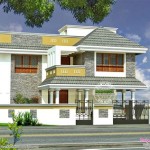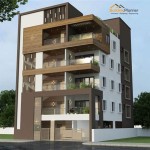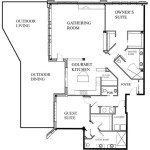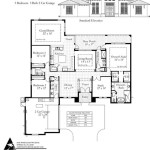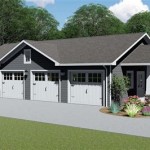Hollyhock House: Designing with Hollyhocks in Mind
Hollyhock House, officially known as the Aline Barnsdall Hollyhock House, stands as a pivotal example of early modern architecture and landscape integration. Designed by Frank Lloyd Wright between 1919 and 1921, it served as a residence for oil heiress Aline Barnsdall, who sought to create an arts complex on the property. While the complex never fully materialized as Barnsdall envisioned, the house itself remains a significant architectural landmark, particularly notable for its unique incorporation of the hollyhock flower motif.
The architectural significance of Hollyhock House lies in its embodiment of Wright's "California Romanza" style. This style represented an attempt to reconcile Wright's prairie school principles with the specific climatic and cultural context of Southern California. The use of pre-cast concrete blocks, tilted at a 45-degree angle, became a defining characteristic of the house, contributing to its distinctive visual texture and creating a sense of mass and permanence. The design aimed to evoke the feeling of a Mayan temple while simultaneously embracing the modern aesthetic of the early 20th century.
The hollyhock, Barnsdall's favorite flower, became a pervasive decorative element throughout the house. This integration extends beyond simple ornamentation; it informed the building's structural elements and overall design philosophy. The influence is noticeable in the stylized hollyhock patterns cast into the concrete blocks, as well as in the overall geometric forms employed throughout the interior and exterior spaces. The flower’s verticality is reflected in the house’s elongated proportions and the upward thrust of its central courtyard. This integration is more than just decoration; it's a fundamental aspect of the house's architectural language.
Exploring the Hollyhock Motif
The explicit incorporation of the hollyhock motif is one of the most defining aspects of the house. Wright didn’t merely apply the flower as a superficial design element; instead, he abstracted and stylized it into geometric patterns that became integral to the building's form. This is most readily apparent in the pre-cast concrete blocks that form the majority of the exterior walls. Each block features a repeating hollyhock pattern, cast directly into the concrete during the manufacturing process. These patterns aren't realistic depictions of the flower; they are stylized representations that emphasize the flower's geometric structure and vertical growth.
Beyond the concrete blocks, the hollyhock motif also appears in other decorative elements throughout the house. Stained glass windows, furniture designs, and even textile patterns incorporate variations of the stylized hollyhock. The repetition of this motif creates a cohesive design language that unifies the entire house, blurring the boundaries between architecture, decoration, and landscape. This holistic approach is characteristic of Wright's work, demonstrating his belief in the importance of creating total environments where every element contributes to the overall aesthetic experience.
The choice of the hollyhock itself is also significant. As a tall, stately flower native to California, the hollyhock embodies the spirit of the region. Its vertical growth pattern resonates with the upward aspiration of the house's design, while its vibrant colors and delicate petals offer a counterpoint to the solidity of the concrete blocks. The flower's association with beauty and grace further underscores the house's ambition to be a work of art, a synthesis of architecture and nature.
The California Romanza and its Landscape Integration
Hollyhock House is considered a prime example of Wright's "California Romanza" style, which sought to create a distinctly Californian architectural identity. This style adapted Wright's prairie school principles to the specific climate, topography, and cultural context of Southern California. The Romanza style emphasized the use of local materials, such as concrete and redwood, and prioritized integration with the surrounding landscape. It also drew inspiration from the region's history, incorporating elements of Mayan and Spanish Colonial architecture.
The integration of Hollyhock House with its landscape was a key aspect of Wright's design. Barnsdall envisioned the house as part of a larger arts complex, which would include gardens, theaters, and artist studios. While this complex was never fully realized, the house itself was carefully situated to take advantage of the surrounding views and to create a seamless connection between interior and exterior spaces. The central courtyard, for example, acts as an extension of the living spaces, blurring the boundaries between inside and outside.
The use of native plants in the landscaping further reinforces the connection to the Californian context. Although the original landscaping has undergone changes over the years, the intention was to create a garden that reflected the region's natural beauty. The integration of the house with the landscape is not merely aesthetic; it also serves a functional purpose. The courtyard provides natural ventilation and light, while the surrounding gardens help to regulate the temperature and create a comfortable microclimate.
Structural Innovations and the Pre-Cast Concrete Block System
Hollyhock House is notable for its innovative use of pre-cast concrete blocks as the primary building material. Wright developed this system as a way to create a durable and affordable structure that could be easily adapted to different designs. The concrete blocks were cast in molds on-site, allowing for precise control over their texture, color, and pattern. The tilted angle of the blocks, set at 45 degrees, creates a dynamic visual effect and adds to the structural integrity of the walls. This technique allowed for the efficient construction of large, monolithic structures with a minimal amount of labor.
The use of concrete also reflects Wright's interest in exploring the potential of modern materials. At the time, concrete was a relatively new material, and Wright saw it as a way to break free from traditional building techniques. By using concrete in a creative and expressive way, he was able to create a unique architectural language that was both modern and timeless. The pre-cast block system also allowed him to incorporate the hollyhock motif directly into the building's structure, creating a cohesive and integrated design.
The structural innovations of Hollyhock House extended beyond the use of concrete blocks. Wright also experimented with cantilevered balconies, open floor plans, and innovative lighting systems. These features contributed to the house's sense of spaciousness and modernity. The building's structural system was carefully engineered to ensure its stability and durability, while also allowing for maximum flexibility in the interior layout. This combination of structural innovation and aesthetic vision is what makes Hollyhock House such a significant example of modern architecture.
The design and construction of Hollyhock House presented numerous challenges, particularly due to Barnsdall's evolving needs and Wright's frequent absences. Despite these challenges, the house was eventually completed and became a symbol of Wright's architectural genius. Although the arts complex that Barnsdall envisioned never fully materialized, Hollyhock House remains a testament to her vision and Wright's ability to create buildings that are both beautiful and functional.
Today, Hollyhock House is a UNESCO World Heritage Site and a popular tourist destination. Visitors can tour the house and learn about its history, design, and construction. The house also serves as a venue for cultural events and educational programs, continuing Barnsdall's vision of creating a center for the arts. Its enduring appeal lies in its unique blend of architectural innovation, artistic expression, and landscape integration, making it a landmark of American architecture and a powerful symbol of the California spirit.

Lowe S Multicolor Hollyhock In 2 5 Quart Pot The Perennials Department At Com

Hollyhocks And A Gift For You Life At Bella Terra

Spring Hill Nurseries 2 50 Qt Pot Hollyhock Single Mixture Live Potted Deciduous Flowering Perennial Plant 1 Pack 92406 The Home Depot

Frank Lloyd Wright S Hollyhock House Is An Early Example Of Mayan Revival

Digital Resources Frank Lloyd Wright S Hollyhock House Los Angeles

Hollyhock House Wikipedia

How To Grow And Care For Hollyhocks Creative Living With Bren Haas

An Insider S Tour Of Frank Lloyd Wright Hollyhock House Architectural Digest

How To Grow Hollyhocks Growing In The Garden

Frank Lloyd Wright S Hollyhock House Is An Early Example Of Mayan Revival


